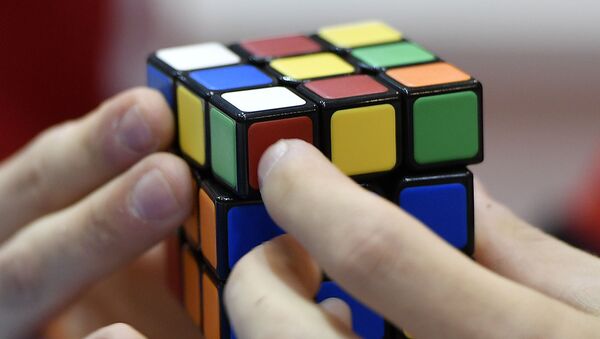Now, researchers at the University of California, Irvine, (UCI) have added a special twist to the cube by creating an artificial intelligence system with the ability to solve the puzzle in a mere fraction of a second.
“DeepCubeA, a deep reinforcement learning algorithm programmed by UCI computer scientists and mathematicians, can find the solution in a fraction of a second, without any specific domain knowledge or in-game coaching from humans. This is no simple task considering that the cube has completion paths numbering in the billions but only one goal state – each of six sides displaying a solid color – which apparently can’t be found through random moves,” a Monday press release by the university reads.
In a study published Monday in the journal Nature Machine Intelligence, researchers revealed that DeepCubeA was able to solve the Rubik’s Cube in 100% of all test configurations, and it found the shortest path to do so about 60% of the time.
“Artificial intelligence can defeat the world’s best human chess and Go players, but some of the more difficult puzzles, such as the Rubik’s Cube, had not been solved by computers, so we thought they were open for AI approaches,” study author Pierre Baldi writes in the release. “The solution to the Rubik’s Cube involves more symbolic, mathematical and abstract thinking, so a deep learning machine that can crack such a puzzle is getting closer to becoming a system that can think, reason, plan and make decisions.”
According to Baldi, the researchers started off with a computer simulation of a completed Rubik’s Cube before scrambling the puzzle. DeepCubeA then spent two days training on how to solve the cube with an “increasingly difficult series of combinations” after the code was “running,” the press release states.
“It learned on its own,” Baldi noted.
“Our AI takes about 20 moves, most of the time solving it in the minimum number of steps,” Baldi said. “Right there, you can see the strategy is different, so my best guess is that the AI’s form of reasoning is completely different from a human’s,” he added, noting that some people take 50 moves to solve the puzzle.
People interact with artificial intelligence every day, when using apps like Siri and Alexa, Baldi noted.
“But these systems are not really intelligent; they’re brittle, and you can easily break or fool them,” Baldi said. “How do we create advanced AI that is smarter, more robust and capable of reasoning, understanding and planning? This work is a step toward this hefty goal.”



